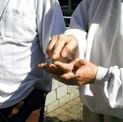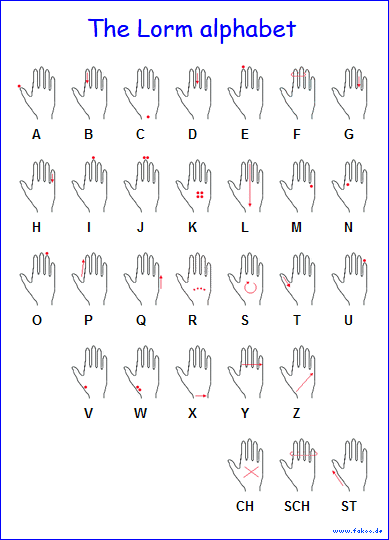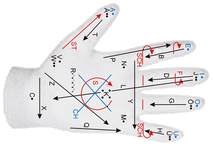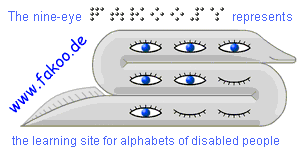The Lorm Alphabet
The tactile alphabet for deaf-blind people (deaf-blind alphabet)

The Lorm alphabet (hand alphabet or tactile
The Dresden deaf writer Hieronymus Lorm developed his tactile alphabet


the Lorm Alphabet as text version for print (new window)
to the top
|
However, the native language of the deafblind is usually not the Lorm Alphabet,
If the deafblind knows the phonetic language, he will prefer lorming as a form
Exercises / additional pages:
- convert your own texts into Lorm Alphabet and print them out
- test if you can assign the alphabet to the touches (for printing)
Downloads / Prints:
- with the font Lorm Alphabet TTF you can print on your computer texts in Lorm Alphabet
- the Lorm Alphabet as a graphic print version
 [Text version of the Lorm alphabet (new window)]
[Text version of the Lorm alphabet (new window)]
 |
The template for a 
At the service ITM you |
Deafblind is a unique disability!
In 2010, Alexander Fakoó designed his own logo, which

different print versions
Helen Keller
Helen Keller (new window) became deafblind at the age of 1 ½ and did not 
Helen Keller and the square script (not Quadoo) Helen Keller Kids Museum Helen Keller birthplace |
Further informations
Communication with Deafblind:A good idea from the Czech Republic and England:

The red-white cane for deafblind people should avoid confusion with the blind.


